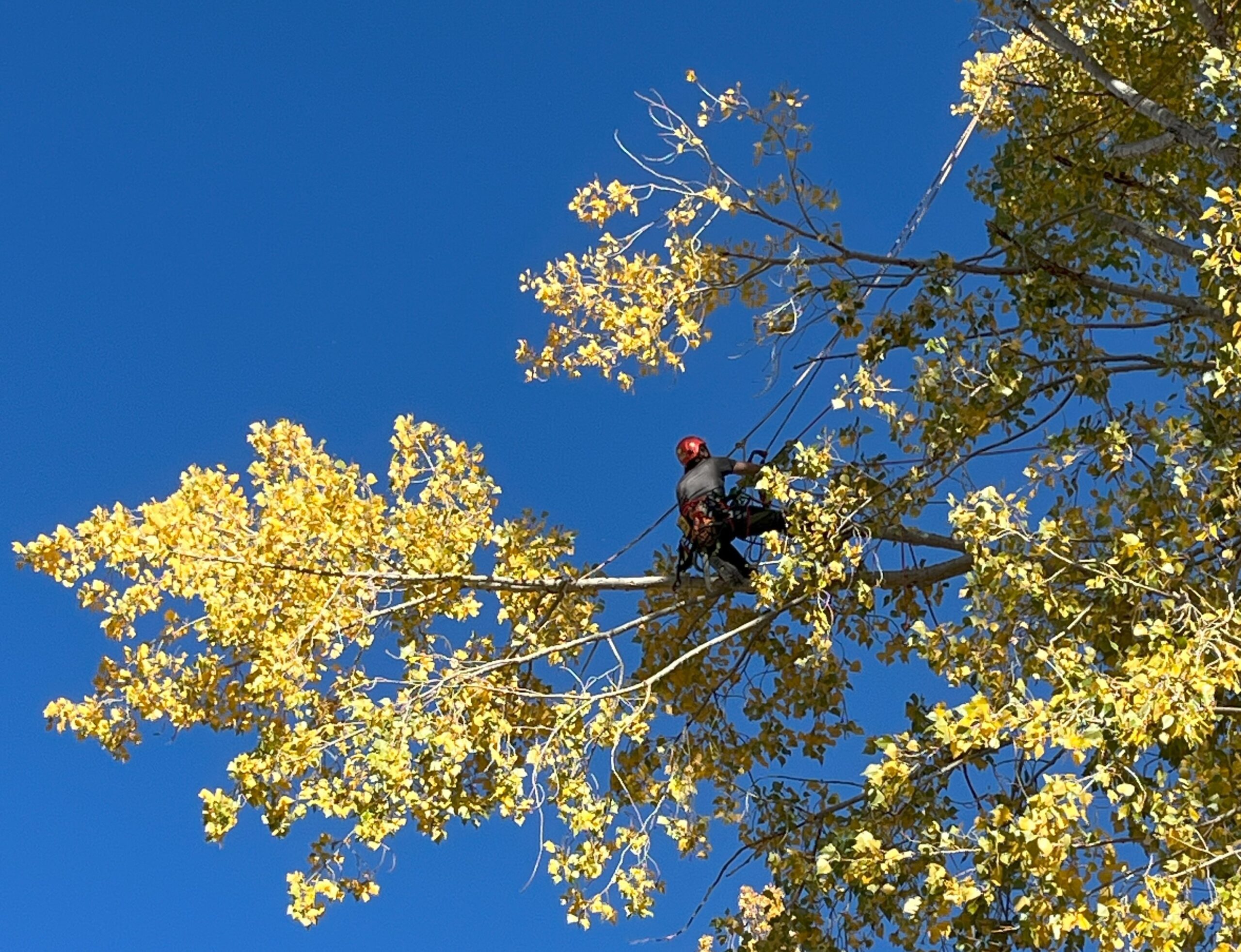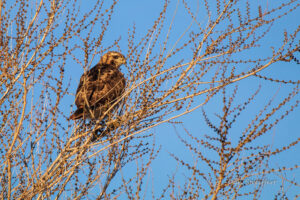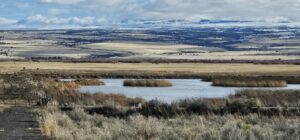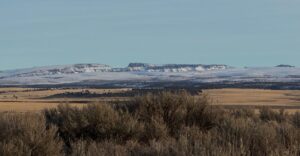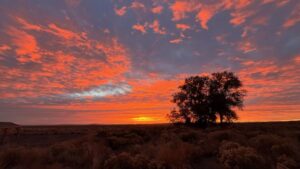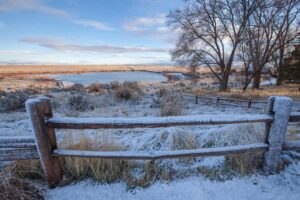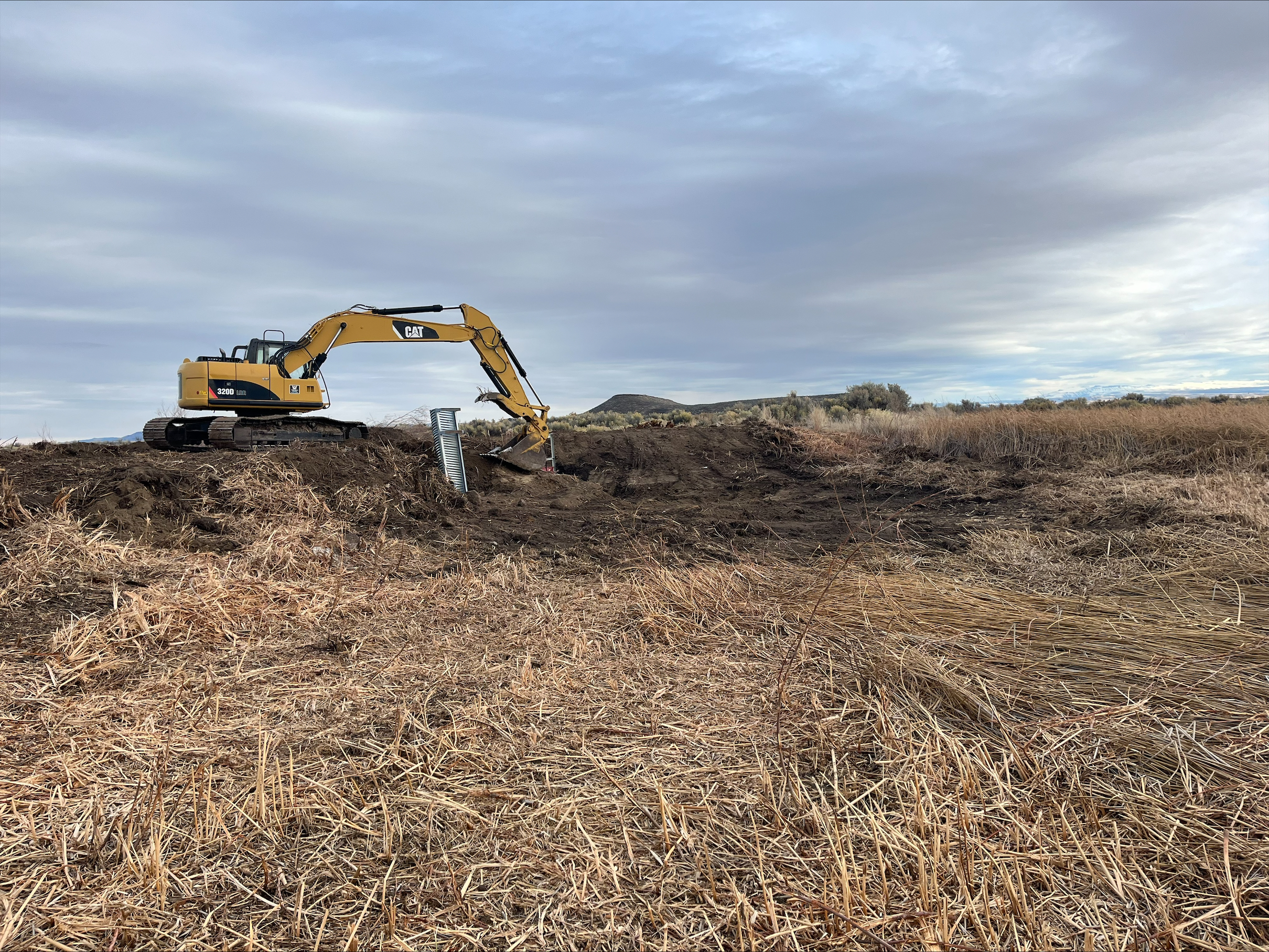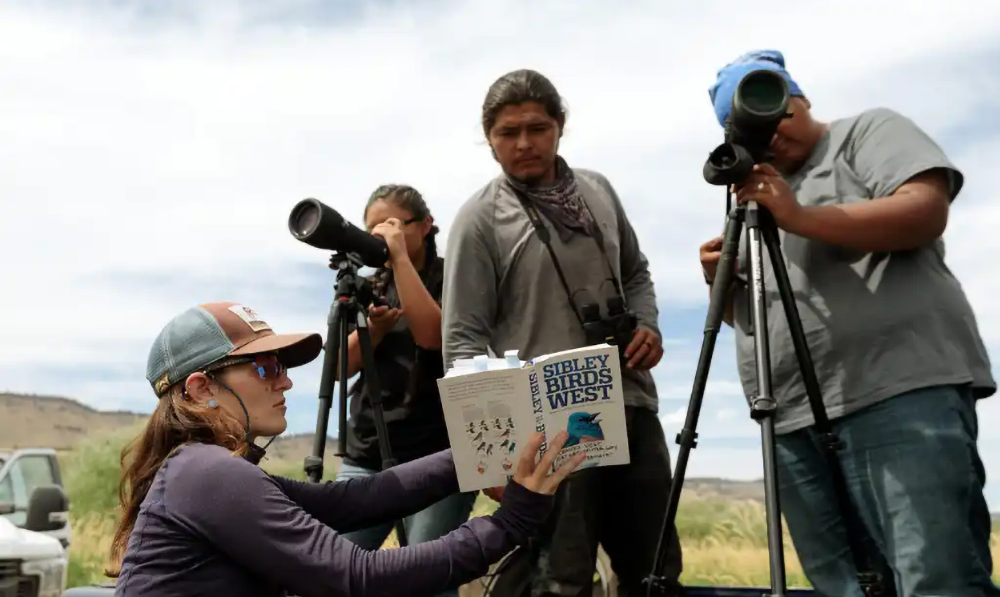Written by Janelle Wicks/ Photos by Karen Tillou, Prunus
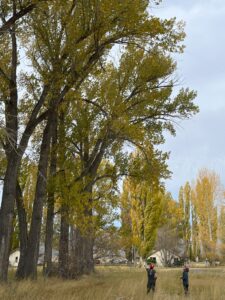
In 2020 Jon Brown and Karen Tillou, Prunus LLC. ‘met every tree’ on the Refuge and subsequently produced a Malheur NWR Tree Inventory and Risk Assessment document. In additions to citing the various trees physical condition they reported on factors such as risk to failing and potential for causing damage to buildings or in areas open to the public. The notes on these ‘risky’ trees also included recommendations that spanned the spectrum of ‘Do Nothing’ to ‘Removal’.
With the financial support of Friends of Malheur NWR, the Refuge has been able to contract with Prunus to conduct safety and mitigation work addressing these risky trees. The approach is being dubbed, Conservation Pruning. The goal of this work are to work with these trees on the Refuge in order to maintain and enhance where possible the habitat value to wildlife and respect their cultural significance.
Arborists Jon, Karen, and Bryan Markhart spent a week in mid-October working with some trees at P-Ranch and along the Central Patrol Road. One of their priorities for this week was hazard mitigation on cottonwood trees that threatened the historic chimney, electrical conductors, existing house, and maintenance sheds (five trees total). These trees had their tops cut in 1961 according to MNWR Annual Narrative documents. In the 60 years since their canopies have become overgrown, most with internal decay and/or branch failures. Controlled reduction of the load on the crowns of these trees using both chainsaws and natural fracturing allows the stress on the trees to be reduced and eliminates the risks associated with natural, unpredictable failures.
Natural fracturing is the process by which the arborists initiate and control the reduction of a limb by essentially ‘pulling it out’ of the tree. This creates a more natural break surface that would exist if the branch had failed and fallen on its own as opposed to the flat and perhaps less penetrable surface of a chainsaw cut. This practice is meant to simulate natural processes in the hopes that insects and the wildlife that depend on them will find these places more appealing.
Another technique that Prunus employs is the use of a ‘zip-line’ for the controlled dropping of branches. This is done by attaching the line to a primary trunk/branch above the target branch and anchoring that line far from the tree in a direction that will miss any at-risk buildings or public spaces. Then the target branch is given a harness of sorts which will be attached to the zip-line. When the branch comes free it simply slides down the line in a measured and controlled manner, maximizing efficiency and safety.
It is our hope to preserve these and other trees across the Refuge as we plan strategic stand replacement in the years to come. Most of these trees are not native to the region but having been planted at the turn of the last century by homesteaders or during the 1930’s by the Civilian Conservation Corps they now contribute significantly to the ecology of the region and offer unvaluable habitat to birds and other wildlife. The Friends of Malheur NWR are proud to support this ongoing work.

